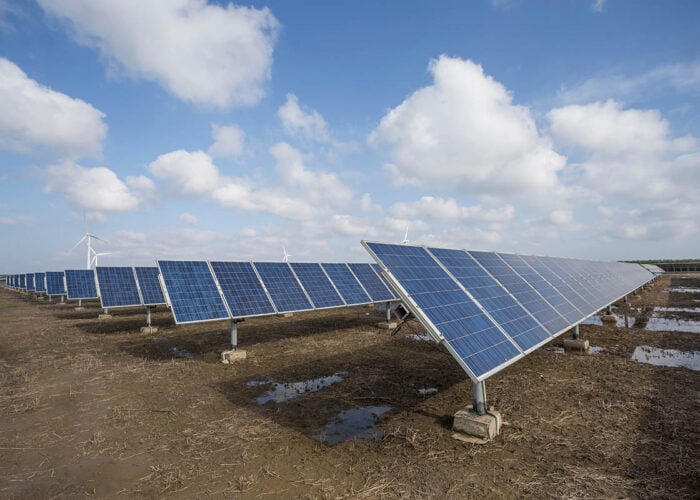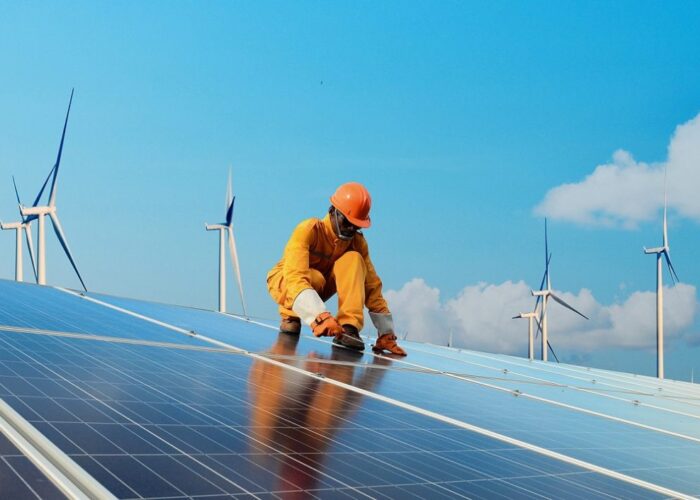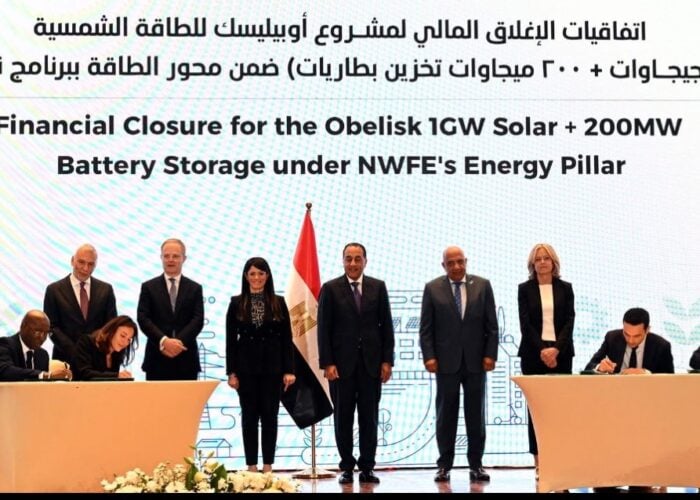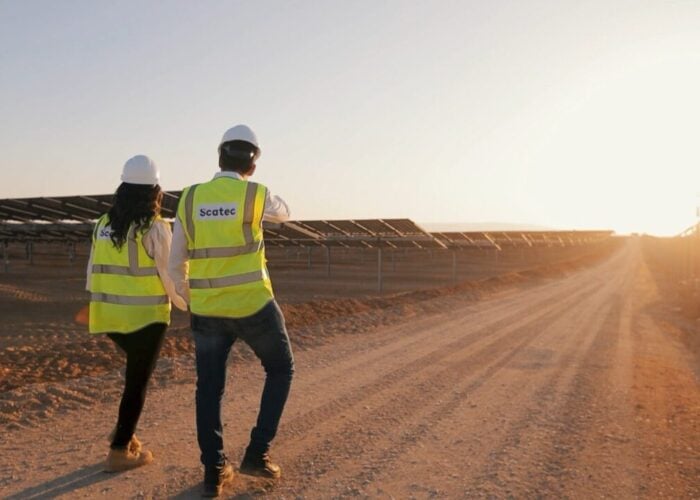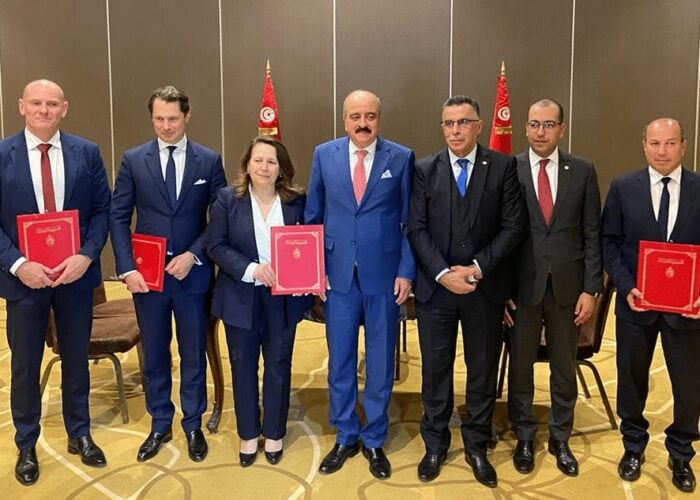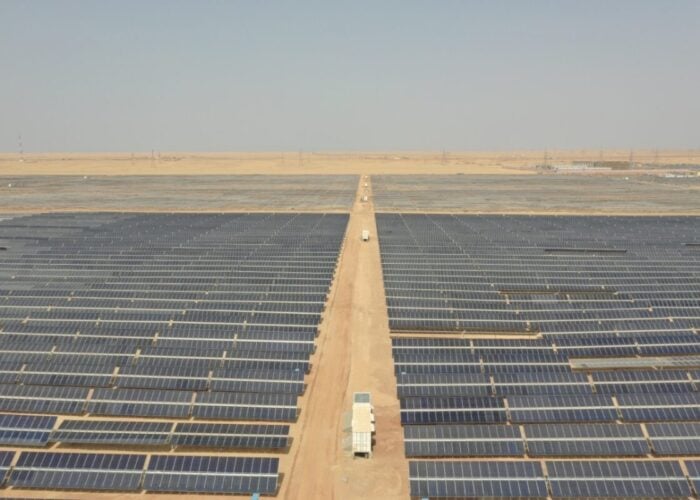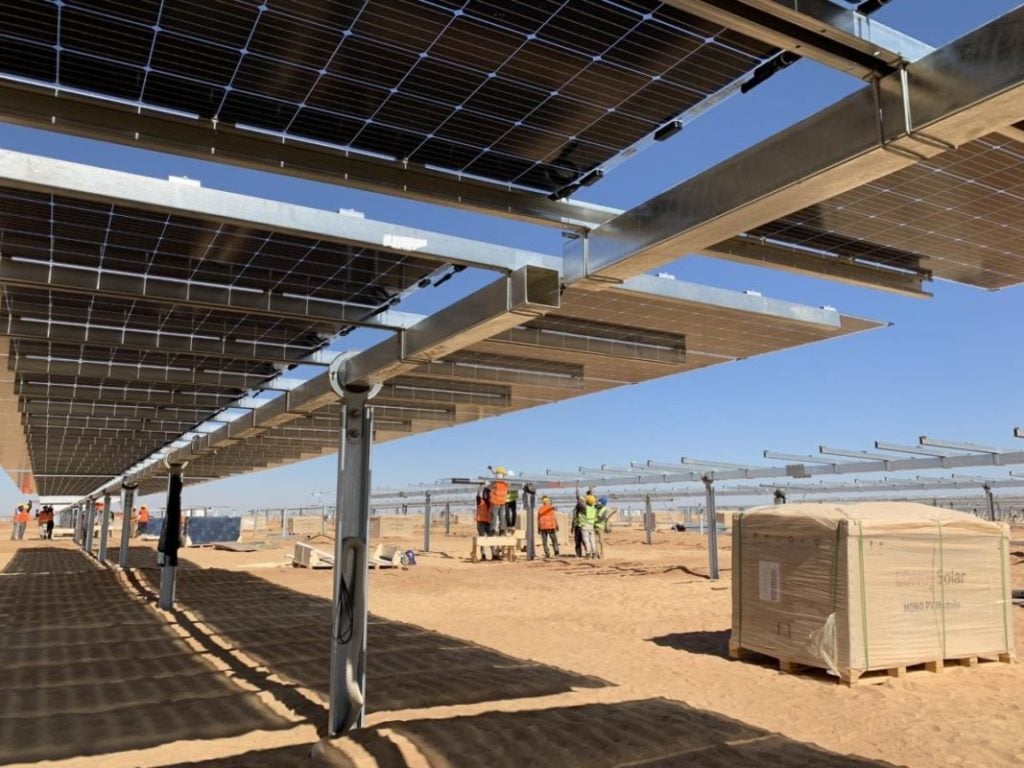
As Europe is increasing its solar PV capacity to reach its goal in the REPowerEU plan, countries in the bloc are accelerating solar PV installation. But some EU countries also look at the solar potential in North Africa, as the region boasts better solar irradiance and longer sunshine hours. PV Tech Power Editor Simon Yuen examines a project that is envisaged to transfer power from Egypt to Greece, and experts’ views on the challenges and benefits of a Mediterranean interconnector.
In May 2023, Infinity Power, a joint venture between United Arab Emirates state-owned renewable energy developer Masdar and Egyptian renewable energy provider Infinity, signed a memorandum of understanding (MoU) with Greek infrastructure investor Copelouzos Group to co-develop renewable energy projects that will provide the Gregy-Elica Interconnector project with a source of green energy.
Unlock unlimited access for 12 whole months of distinctive global analysis
Photovoltaics International is now included.
- Regular insight and analysis of the industry’s biggest developments
- In-depth interviews with the industry’s leading figures
- Unlimited digital access to the PV Tech Power journal catalogue
- Unlimited digital access to the Photovoltaics International journal catalogue
- Access to more than 1,000 technical papers
- Discounts on Solar Media’s portfolio of events, in-person and virtual
According to Infinity Power, the projects involve the electrical interconnection between Egypt and mainland Greece through a submarine cable of 3GW capacity with a length of approximately 950 kilometres, and the possibility of bidirectional energy transmission. It carries only green energy between Egypt and Greece, which ‘makes a decisive contribution in tackling climate change and the greenhouse effect by significantly reducing CO2 emissions’ and reduces Europe’s dependency on energy produced from fossil fuels.
The 3GW of green energy transferred from Egypt to Greece will be generated from 9.5GW of renewable energy sources that Copelouzos Group will build and operate in Egypt.
Additionally, Copelouzos Group says about one-third of the electricity will be consumed in Greece by households and businesses, another third will be exported to neighbouring countries of the EU, while the remainder will be used in Greece for the production of green hydrogen, with the bulk of this hydrogen being exported to neighbouring European countries.
“This project is a remarkable opportunity for Egypt to benefit through economic development and revenue growth. It will also enhance the country’s energy security and be a key venture in promoting international cooperation,” said Mohamed Ismail Mansour, chairman of Infinity Power. “By supplying renewable energy to Europe, we are not only bolstering our economy but also positioning ourselves as a key player in the global energy market.”
Solar PV market and potential in Egypt
Generally, North African countries boast higher potential in solar PV thanks to solar irradiance and sunshine hours. For example, Egypt offers ideal conditions for the use of solar PV to generate electricity as the average annual global horizontal irradiation ranges between 2,045 and 2,483 kWh/m², according to the Solarize Africa Market Report published this year by the German Solar Industry Association (BSW).
Most of the capacity would come from the Benban Solar Park in Egypt’s western desert. Made up of 41 solar projects, the solar park spans 37 square kilometres and has a total generation capacity of around 1.8GW.
Egypt’s ministry of electricity and renewable energy had previously announced its aim of generating 20% of its electricity from renewables by 2022, with solar PV accounting for 2% of the total generation capacity. As of 2035, Egypt plans to generate 42% of its electricity from renewables, with solar PV gaining much more importance to account for 22% of the energy mix, higher than all other renewable sources.
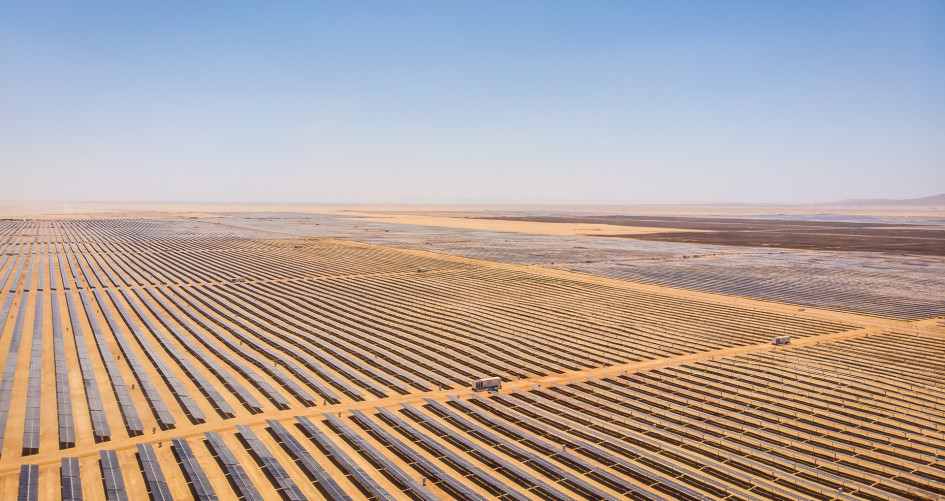
However, the target of 20% electricity from renewable sources by 2022 was not met. Reaching the 2035 target of 42% would require an estimated 31GW of solar power capacity addition to the grid by 2035.
According to the International Renewable Energy Agency (IRENA), Egypt has the potential to reach 44GW of installed solar PV capacity by 2030, while the Egyptian ministry of electricity and renewable energy estimated a solar power potential of more than 50GW.
IRENA said Egypt’s estimated newly installed capacity was only 49MW in 2022, but solar PV additions accelerated this year as construction started for a 560MW PV installation in the country, which was backed by funding from the International Finance Corporation, the Dutch Entrepreneurial Development Bank and the Japan International Cooperation Agency. Owned and operated by AMEA Power, the solar power plant is expected to be completed by mid-2024.
Morocco’s solar PV market and potential
Morocco also boasts high levels of solar resources since a big part of the country is covered by desert. Having about 3,000 hours of sunshine per year, Morocco averages annual global horizontal irradiation ranging from 1,753 to 2,264 kWh/m² in the desert.
Regarding its renewable energy policies, Morocco increased its official target in 2015 to have more than half of its energy coming from renewables by 2030, translating into a target of 4.5GW solar.
By 2050, renewable energy will account for 80% of Morocco’s electricity mix based on Morocco’s official target. In 2022, the estimated total installed capacity reached 318MW thanks to the construction of several utility-scale plants in earlier years, mainly comprising combined solar PV and concentrated solar power plants within the 580MW Noor Solar Power Complex.
In July 2023, Morocco’s renewable energy agency Masen announced that six consortiums were pre-qualified to build the 400MW Noor Midelt II solar PV plant project. The project consists of the building of a solar PV power plant with a two-hour storage capacity.
But Morocco is not new to supplying energy to Europe. It has two energy interconnections with Spain, while both Morocco and Spain signed a MoU in 2019 to build a third power link.
A more prominent example of Morocco supplying energy to Europe is a 10.5GW solar-plus-wind project in Morocco’s Guelmim Oued Noun region, with 3.6GW of this to be exported to the UK via 3,800 kilometres of subsea cables.
According to Xlinks, the company behind the Morocco-UK power project, the project can generate power for 20 hours a day on average, taking advantage of the high solar irradiance in the south of Morocco alongside consistent convection desert winds, providing an alternative source of zero carbon electricity to the UK. Xlinks claims that the project will be capable of supplying 8% of the UK’s electricity needs.
Tunisia’s solar PV market and potential
Tunisia has an average annual global horizontal irradiation between 1,607 and 2,191 kWh/m². However, electricity generation from renewables, particularly from solar PV, only accounted for about 3% as of 2021, while only about 0.3 % of electricity production came from solar PV.
The installed solar PV capacity is estimated to remain at 197MW by the end of 2022.
Although renewables only accounted for a small portion of Tunisia’s power generation, the Tunisian ministry of industry, mines and energy set the goal in 2022 of achieving 35% of the country’s energy production through renewables in 2030. The government also launched more measures to encourage solar adoption. For example, in 2017, feed-in tari‑s were introduced for solar installations under 10MW, including the possibility of net metering and net billing within selected grids.
Since early 2020, a new regulation for net metering has allowed renewable power companies to produce and sell excess electricity to either the national power utility, the Tunisian Company of Electricity and Gas (STEG), or private third parties through power purchase agreements (PPAs).
Tunisia also explored the potential of offshore solar systems. Last year, the first floating PV plant in the North African region was inaugurated by French independent power producer (IPP) Qair in Tunisia with a total capacity of 200kW. In January 2023, Tunisia announced a plan to build a 100MW solar PV system in El Metbassta, a region north of the city of Kairouan.
Looking forward, Tunisia will increase its solar PV capacity since 1GW was tendered in January 2023 under the current authorisation regime and a subsequent tender with 200MW capacity was announced for the near future.
The African market
As of 2020, installed solar capacity, including both solar PV and thermal, in North Africa surpassed more than 3GW, according to IRENA’s report ‘Planning and prospects for renewable power North Africa’. However, such installed capacity corresponded to only 2.7% of the region’s total installed electricity generation capacity of approximately 116GW.
However, the reduced costs of installing solar PV capacity make it an alternative to replacing electricity generation based on fossil fuels. The report states that the average total installed cost for solar PV in the North African region dropped from US$2,000 per kW in 2015 to US$1,306 per kW in 2019, representing a 34.7% decrease.
Mohamed Alaoui, managing director of energy consultancy Africa Climate Solutions, says developing renewable energy in North Africa can bring numerous benefits to the region’s economy and contribute to sustainable development, including attracting foreign investment, establishing supportive policies and regulations, fostering cooperation between North African countries and the European countries, and enhancing technology transfer and skills development.
For example, Copelouzos Group says that a total budget of €4.2 billion (US$4.6 billion) will be allocated for the Gregy-Elica Interconnector project.
Moreover, the Xlinks project budget is likely to reach US$21.9 billion, according to a news outlet in Morocco. This project will create 10,000 jobs in Morocco, including 2,000 permanent jobs. It also creates 1,350 new permanent jobs in the UK by 2024 and a thousand more jobs in the supply chain.
Challenges of developing solar PV in North Africa
Nivedh Thaikoottathil, renewables and power analyst at Rystad Energy, says Africa only accounts for a very small part of global investment in renewable energy, and most of the investments are focused on North Africa and South Africa. Such a background offers opportunities to renewable energy companies when they plan to develop and explore business opportunities in the continent.
But there are several issues that need solving before realising the region’s potential.
“One of the common issues in African countries, even in North Africa, is the high upfront cost. While funding is usually from the private sector, gathering investment and incentivising the power sector has been a challenge in the past,” says Thaikoottathil.
Egypt and Morocco tackled the challenges by launching PPAs or feed-in tariffs. For example, the Moroccan Agency for Solar Energy (Masen) signed a PPA with ACWA Power to develop 170MW of solar projects in 2016. Egypt launched a feed-in tariff support system for solar PV and wind projects with a capacity of less than 50MW in 2014.
As for the operation of solar power plants, although deserts are suitable for building solar PV plants, Thaikoottathil says the accumulation of sand particles, as well as the high temperature, could lower the efficiency of those plants.
The supply chain is also another major issue when it comes to building solar PV plants in North Africa, as there are no manufacturing capabilities in the region, which makes setting up solar PV plants more difficult.
But this situation could change in the near future. The Africa Renewable Energy Manufacturing Initiative (AREMI) was launched in early 2023 with the aim of scaling up renewable energy manufacturing capabilities in Africa. It focuses on capacity building, knowledge transfer, policy dialogues, and advocacy, as well as enabling pilot projects that drive low-emission development and carbon neutrality in Africa.
The initiative suggests African solar PV manufacturing could start by prioritising cell manufacturing and module assembly as they require less technological and chemical complexity, labour availability and existing solar panel assembly among others.
Another reason that could prevent North African countries from opting for more renewables could be the cost of making any changes to their energy mix. North African countries are heavily reliant on fossil fuels and gas to produce electricity, and Fabian Rønningen, senior analyst of renewables and power research at Rystad Energy, says the countries could spend their CapEx on gas plants instead of renewables.
“It could be cheaper for them to maintain the current energy mix instead of building renewables.”
Difficulties in transferring power to Europe
Speaking of building subsea cables between North Africa and Europe, Thaikoottathil highlights three major challenges, namely the manufacturing capacity, location of the cable manufacturer, and maintenance.
Currently, each vessel can only carry about 200 kilometres worth of cable. In comparison, the cables connecting Greece and Egypt could be as many as 1,000 kilometres, meaning that building the cables will require travelling to and from the manufacturing site and the location of the project at least five times.
“Manufacturing capacity of such cable is about 500 kilometres a year, equivalent to two years’ time of manufacturing for this project. These cables are in the ocean and prone to damage due to anchors of the ships or even shing equipment, in addition to identifying the location of the damaged cable,” Thaikoottathil says.
Transferring power to sub-Saharan countries instead?
Last year, the European Union (EU) announced the REPowerEU Plan to transform Europe’s energy system. It hopes to end the EU’s dependence on Russian fossil fuels and tackle the climate crisis. The EU Solar Energy Strategy even aims to bring online over 320GW of solar PV by 2025 and almost 600GW by 2030.
According to SolarPower Europe, the 27 EU member states saw 41.4GW of new solar PV capacity connected to their grids, a 47% increase compared to 2021. Such an increase represented a back-to-back impressive growth as there was 28.1GW of solar PV added to the grid in 2021.
As of 2022, the EU’s solar power generation capacity increased by 25% to 208.9 GW, from 167.5GW in 2021, only four years after it passed the 100GW milestone in 2018. Solar Power Europe also estimated that the installed solar capacity could grow from 54GW to up to 68GW in 2023.
Asked whether supplying energy from North Africa could help Europe reach its goal, Thaikoottathil says it depends on how serious the project developers are. “It will be possible to reach the target, but supply chain issues can hamper progress.”
Although building a subsea cable could be technically difficult, North African countries are still exploring the possibilities of developing such projects instead of supplying energy to sub-Saharan countries.
Currently, 600 million people in Africa, or 43% of the total population, lack access to electricity, most of them in sub-Saharan Africa, according to the International Energy Agency’s (IEA) Africa Energy Outlook 2022, while the majority of the people without electricity access in Africa are based in rural areas.
“When it comes to increasing electricity access in the continent, it will be hard to give access to this population that lacks electricity by extending the main grids,” Thaikoottathil says.
One of the ways to tackle this problem is to set up solar-based mini-grid and stand-alone systems.
“These methods will be isolated and for a specific area. Therefore, extending the grid from North Africa will be expensive and difficult as most people live in rural areas.”
Lastly, Thaikoottathil says political conflicts between countries in Africa, along with IPPs’ reluctance to invest in Africa due to obsolete procurement methods, also prevent supplying energy to sub-Saharan countries from happening.

